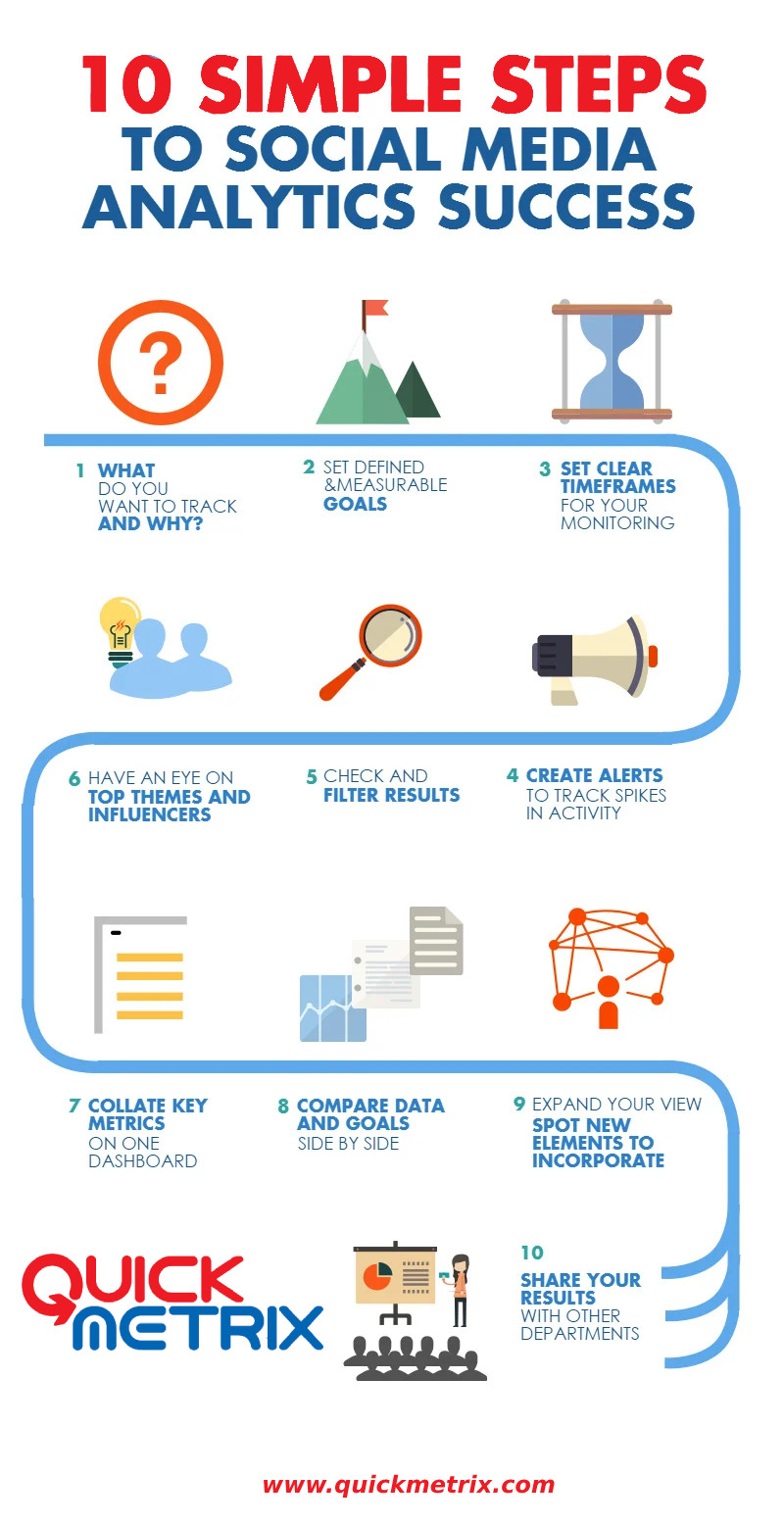#Data collection techniques
Explore tagged Tumblr posts
Text
5 Methods of Data Collection for Quantitative Research
Discover five powerful techniques for gathering quantitative data in research, essential for uncovering trends, patterns, and correlations. Explore proven methodologies that empower researchers to collect and analyze data effectively.
#Quantitative research methods#Data collection techniques#Survey design#Statistical analysis#Quantitative data analysis#Research methodology#Data gathering strategies#Quantitative research tools#Sampling methods#Statistical sampling#Questionnaire design#Data collection process#Quantitative data interpretation#Research survey techniques#Data analysis software#Experimental design#Descriptive statistics#Inferential statistics#Population sampling#Data validation methods#Structured interviews#Online surveys#Observation techniques#Quantitative data reliability#Research instrument design#Data visualization techniques#Statistical significance#Data coding procedures#Cross-sectional studies#Longitudinal studies
1 note
·
View note
Text
The Evolution of Pomegranate Farming: From Secrecy to Collective Growth
Pomegranate farming has a rich history, deeply rooted in tradition and secrecy. For many years, it was a practice reserved for a select few who guarded their knowledge and techniques closely. This culture of secrecy had significant consequences, deterring new farmers from entering the field and leading to financial losses for those who dared to try. However, the past few years have seen a…
#agricultural exhibitions#Agricultural Innovation#agricultural practices#agricultural resources#agriculture#collective growth#crop productivity#data-driven farming#farmer collaboration#farmer empowerment.#farmer networks#Farmer Support#farming best practices.#farming challenges.#Farming Community#farming profitability#farming success#farming sustainability#farming techniques#Farming technology#farming transformation#Irrigation systems#Kenyan agriculture#knowledge sharing#Market access#pomegranate cultivation#pomegranate farming#pomegranate orchards#social media in farming#sustainable farming
1 note
·
View note
Text
High duplication of HTTP Proxies IPs used for crawling? How to solve it?
With the continuous progress of network technology, crawler technology has been widely used in many fields. In order to avoid being blocked by the website's anti-crawling mechanism, many developers will use Proxies IP to disguise the real identity of the crawler. However, many developers find that the duplication rate of Proxies IP is actually very high when using Proxies IP, which gives them a headache. Today, let's talk about why Proxies have such a high duplication rate? And how to solve this problem?
Why is the Proxies IP duplication rate high?
Have you ever wondered how you can still be "captured" even though you have used Proxies? In fact, the root of the problem lies in the high rate of IP duplication. So, what exactly causes this problem? The following reasons are very critical:
1. Proxies IP resources are scarce and competition is too fierce

2. Free Proxies to "squeeze out" resources
Many developers will choose to use free Proxies IP, but these free service providers often assign the same IP to different usersin order to save resources. Although you don't have to spend money, these IPs tend to bring more trouble, and the crawler effect is instead greatly reduced.
3. Crawling workload and frequent repetitive requests
The job of a crawler usually involves a lot of repetitive crawling. For example, you may need to request the same web page frequently to get the latest data updates. Even if you use multiple Proxies IPs, frequent requests can still result in the same IP appearing over and over again. For certain sensitive websites, this behavior can quickly raise an alarm and cause you to be blocked.
4. Anti-climbing mechanisms are getting smarter
Today's anti-crawling mechanisms are not as simple as they used to be, they are getting "smarter". Websites monitor the frequency and pattern of IP visits to identify crawler behavior. Even if you use Proxies, IPs with a high repetition rate are easily recognized. As a result, you have to keep switching to more IPs, which makes the problem even more complicated.
How to solve the problem of high Proxies IP duplication?
Next, we'll talk about how to solve the problem of high IP duplication to help you better utilize Proxies IP for crawler development.
1. Choose a reliable Proxies IP service provider
The free stuff is good, but the quality often can't keep up. If you want a more stable and reliable Proxies IP, it is best to go with a paid Proxies IP service provider. These service providers usually have a large number of high-quality IP resources and can ensure that these IPs are not heavily reused. For example, IP resources from real home networks are more protected from being blocked than other types of IPs.
2. Rationalization of IP allocation and rotation

3. Regular IP monitoring and updating
Even the best IPs can be blocked after a long time. Therefore, you need to monitor Proxies IPs on a regular basis. Once you find that the duplication rate of a certain IP is too high, or it has begun to show access failure, replace it with a new one in time to ensure continuous and efficient data collection.
4. Use of Proxies IP Pools
To avoid the problem of excessive Proxies IP duplication, you can also create a Proxy IP pool. Proxies IP pool is like an automation tool that helps you manage a large number of IP resources and also check the availability of these IPs on a regular basis. By automating your IP pool management, you can get high-quality Proxies more easily and ensure the diversity and stability of your IP resources.

How to further optimize the use of crawlers with Proxies IP?
You're probably still wondering what else I can do to optimize the crawler beyond these routine operations. Don't worry, here are some useful tips:
Optimize keyword strategy: Use Proxies IP to simulate search behavior in different regions and adjust your keyword strategy in time to cope with changes in different markets.
Detect global page speed: using Proxies IP can test the page loading speed in different regions of the world to optimize the user experience.
Flexible adjustment of strategy: Through Proxies IP data analysis, understand the network environment in different regions, adjust the strategy and improve the efficiency of data collection.
Conclusion
The high duplication rate of Proxies IP does bring a lot of challenges to crawler development, but these problems are completely solvable as long as you choose the right strategy. By choosing a high-quality Proxies IP service provider, using Proxies IPs wisely, monitoring IP status regularly, and establishing an IP pool management mechanism, you can greatly reduce the Proxies IP duplication rate and make your crawler project more efficient and stable.
0 notes
Text
Learn data gathering methods for e-commerce with web scrapers. Discover techniques to extract valuable insights. Enhance your data-driven decision-making.
For More Information:-
0 notes
Text

What are the steps of social media analytics?
Explore the essential steps of social media analytics to harness valuable insights and optimize your online presence.
www.quickmetrix.com
#Social media analytics process#Step-by-step social media analysis#Guide to social media metrics#India social media insights#Analyzing social media trends#Social media data collection methods#Understanding social media algorithms#Importance of social media monitoring#Measuring social media engagement#Impact of social media on business#Effective social media tracking#Key social media metrics#Social media reporting techniques#Mastering social media analytics
0 notes
Text
Sure, but I still want to know their priors and sampling techniques. Failing that, using the most easily accessible methods to gather data can still yield potentially interesting information about overall dynamics even if we apply mathematical analyses that assume oversampling of queer users to "correct" the effects of snowball sampling. It's worth noting that sampling information about human sexuality is pretty much uniformly nightmarish in any case; this is actually not that much worse than published peer reviewed sampling efforts, horribly enough.
I am taking everyone who made a poll to gauge the True Percentage of Queers on Tumblr and putting them through a statistics course
#if i had a nickel for every psych study focusing on queer people that uses snowball sampling for their queer sample#and randomly harvested psych 101 undergrads for their “heterosexual” sample#pretty sure there's a buck in there just from my asexuality studies folder alone#admittedly we're not trying to compare two samples here we're trying to estimate prevalence#but real scientists are also likely to use nonoptimal sampling techniques in experiments if optimal ones are deemed Too Hard#my favorite is “haphazard sampling” == “we have some population of little critters and we grabbed the first n we could catch as our sample”#(it's not random because catchability is a metric of the individual little dudes in question)#anyway in conclusion if they're not going to put their methods section in plain English I'm treating them like a Science paper#and assuming shit is significantly more dodgy than it looks at first blush#at least I know what the sampling bias is on this version and if it gets big enough I can use specific tools to deal with it#even if that is simply comparing number of active accounts to number of responding accounts and assuming various levels of bias response#if we have clear methods we can do math about the obvious flaws#if we don't all we can do is imagine the way we hope data was collected#and look I've been in this game long enough to be Skeptical#also that said: this is largely for fun and sarcasm
44K notes
·
View notes
Text
Raptor brains!

Here's a Troodontid braincase I recently completed preparing using small air scribes, carbowax techniques, and air abrasion under high magnification microscopes. Every square millimeter of this paper-thin hydroxyapatite wants to shatter like tempered glass.
There are probably fewer than 10 Troodontid braincases in the world, and most are squashed flat. This new specimen is preserved in 3D so it'll be put it in a micro-CT scanner to see the inside of the brain cavity. I purposely left matrix inside the cavity because it could have data that the CT scanner could let us see and acts as a support for the brittle bone.
From US Public Lands administered by the Bureau of Land Management - Montana/Dakotas. Found by volunteer Tom Beckenholdt. Collected by Tom & Elizabeth Freedman Fowler.
#badlands dinosaur museum#Cretaceous#judith river formation#theropod#Troodontid#palaeontology#paleoblr#palaeoblr#fossils#fossil#dinosaurs#fossil prep#paleontology#science#troodon#raptor
458 notes
·
View notes
Text

Six Answers to Questions You’re Too Embarrassed to Ask about the Hottest Year on Record
You may have seen the news that 2023 was the hottest year in NASA’s record, continuing a trend of warming global temperatures. But have you ever wondered what in the world that actually means and how we know?
We talked to some of our climate scientists to get clarity on what a temperature record is, what happened in 2023, and what we can expect to happen in the future… so you don’t have to!

1. Why was 2023 the warmest year on record?
The short answer: Human activities. The release of greenhouse gases like carbon dioxide and methane into the atmosphere trap more heat near Earth’s surface, raising global temperatures. This is responsible for the decades-long warming trend we’re living through.
But this year’s record wasn’t just because of human activities. The last few years, we’ve been experiencing the cooler phase of a natural pattern of Pacific Ocean temperatures called the El Niño Southern Oscillation (ENSO). This phase, known as La Niña, tends to cool temperatures slightly around the world. In mid-2023, we started to shift into the warmer phase, known as El Niño. The shift ENSO brought, combined with overall human-driven warming and other factors we’re continuing to study, pushed 2023 to a new record high temperature.

2. So will every year be a record now?
Almost certainly not. Although the overall trend in annual temperatures is warmer, there’s some year-to-year variation, like ENSO we mentioned above.
Think about Texas and Minnesota. On the whole, Texas is warmer than Minnesota. But some days, stormy weather could bring cooler temperatures to Texas while Minnesota is suffering through a local heat wave. On those days, the weather in Minnesota could be warmer than the weather in Texas. That doesn’t mean Minnesota is warmer than Texas overall; we’re just experiencing a little short-term variation.
Something similar happens with global annual temperatures. The globe will naturally shift back to La Niña in the next few years, bringing a slight cooling effect. Because of human carbon emissions, current La Niña years will be warmer than La Niña years were in the past, but they’ll likely still be cooler than current El Niño years.

3. What do we mean by “on record”?
Technically, NASA’s global temperature record starts in 1880. NASA didn’t exist back then, but temperature data were being collected by sailing ships, weather stations, and scientists in enough places around the world to reconstruct a global average temperature. We use those data and our modern techniques to calculate the average.
We start in 1880, because that’s when thermometers and other instruments became technologically advanced and widespread enough to reliably measure and calculate a global average. Today, we make those calculations based on millions of measurements taken from weather stations and Antarctic research stations on land, and ships and ocean buoys at sea. So, we can confidently say 2023 is the warmest year in the last century and a half.

However, we actually have a really good idea of what global climate looked like for tens of thousands of years before 1880, relying on other, indirect ways of measuring temperature. We can look at tree rings or cores drilled from ice sheets to reconstruct Earth’s more ancient climate. These measurements affirm that current warming on Earth is happening at an unprecedented speed.
4. Why does a space agency keep a record of Earth’s temperature?
It’s literally our job! When NASA was formed in 1958, our original charter called for “the expansion of human knowledge of phenomena in the atmosphere and space.” Our very first space missions uncovered surprises about Earth, and we’ve been using the vantage point of space to study our home planet ever since. Right now, we have a fleet of more than 20 spacecraft monitoring Earth and its systems.
Why we created our specific surface temperature record – known as GISTEMP – actually starts about 25 million miles away on the planet Venus. In the 1960s and 70s, researchers discovered that a thick atmosphere of clouds and carbon dioxide was responsible for Venus’ scorchingly hot temperatures.

Dr. James Hansen was a scientist at the Goddard Institute for Space Studies in New York, studying Venus. He realized that the greenhouse effect cooking Venus’ surface could happen on Earth, too, especially as human activities were pumping carbon dioxide into our atmosphere.
He started creating computer models to see what would happen to Earth’s climate as more carbon dioxide entered the atmosphere. As he did, he needed a way to check his models – a record of temperatures at Earth’s surface over time, to see if the planet was indeed warming along with increased atmospheric carbon. It was, and is, and NASA’s temperature record was born.
5. If last year was record hot, why wasn’t it very hot where I live?
The temperature record is a global average, so not everywhere on Earth experienced record heat. Local differences in weather patterns can influence individual locations to be hotter or colder than the globe overall, but when we average it out, 2023 was the hottest year.
Just because you didn’t feel record heat this year, doesn’t mean you didn’t experience the effects of a warming climate. 2023 saw a busy Atlantic hurricane season, low Arctic sea ice, raging wildfires in Canada, heat waves in the U.S. and Australia, and more.

And these effects don’t stay in one place. For example, unusually hot and intense fires in Canada sent smoke swirling across the entire North American continent, triggering some of the worst air quality in decades in many American cities. Melting ice at Earth’s poles drives rising sea levels on coasts thousands of miles away.

6. Speaking of which, why is the Arctic – one of the coldest places on Earth – red on this temperature map?
Our global temperature record doesn’t actually track absolute temperatures. Instead, we track temperature anomalies, which are basically just deviations from the norm. Our baseline is an average of the temperatures from 1951-1980, and we compare how much Earth’s temperature has changed since then.
Why focus on anomalies, rather than absolutes? Let’s say you want to track if apples these days are generally larger, smaller, or the same size as they were 20 years ago. In other words, you want to track the change over time.
Apples grown in Florida are generally larger than apples grown in Alaska. Like, in real life, how Floridian temperatures are generally much higher than Alaskan temperatures. So how do you track the change in apple sizes from apples grown all over the world while still accounting for their different baseline weights?
By focusing on the difference within each area rather than the absolute weights. So in our map, the Arctic isn’t red because it’s hotter than Bermuda. It’s red because it’s gotten relatively much warmer than Bermuda has in the same time frame.
Want to learn more about climate change? Dig into the data at climate.nasa.gov.
Make sure to follow us on Tumblr for your regular dose of space!
3K notes
·
View notes
Text
Author's note: Come from my private au, has so many settings I am never said before but I think it is funny, must post.
Tumblr formatting sucks so I had to change it like this.
EXPOSED: 133 SPICY SECRETS THE IMPERIUM DOESN’T WANT YOU TO KNOW — WHAT THE PRIMARCHS REALLY DO AFTER DARK!
From kink collections to bedroom blunders — the juiciest, weirdest, and most heretical habits of the Emperor’s golden boys. You won’t believe #26… and #90? Absolutely illegal in 7 systems!
The Lion maintains absolute discipline even during climax, barely changes expression.
Has a secret passionate side that only emerges with you.
Silent hunter in the streets, vocal beast in the sheets.
Despite his serious demeanor, he makes cat noises when he comes. Not sexy growls, literal "meow" sounds.
Has never discussed his intimate life with anyone, total compartmentalization.
Possesses surprisingly detailed knowledge of ancient Terran tantric practices.
Watch you like prey before making a move, intense predatory stare.
Has a ritual of knightly "service" that leaves you breathless.
Fulgrim has tried literally every sexual practice in Imperial records.
Can delay his climax indefinitely through perfect muscular control.
His perfectionism extends to sexual performance, practices techniques alone.
Has a mirror positioned above his bed, claiming it's "for technique refinement."
Keeps a detailed journal rating every sexual encounter on multiple criteria.
Always smells like different exotic perfumes depending on his mood.
Perturabo pproaches pleasure like an engineering problem to be solved with precision.
Records biometric data during encounters to analyze optimal techniques.
His jealousy issues manifest as possessiveness in relationship.
He has body image issues despite being built like a Greek god. When you started calling his stretch marks "triumph lines" and his response was to short-circuit emotionally.
Surprisingly responsive to praise during intimate moments.
Despite his gruff exterior, he cries during his refractory period. Every time.
Has trust issues that translate to control dynamics in bed.
Jaghatai's speed isn't just for the battlefield, it can vibrate certain body parts.
Never stays in one position for long, constant motion and rhythm.
Has a thing for outdoor sex.
Braids his hair specially for intimate occasions, pulls it out after.
Makes a distinctive sound during climax that's become legendary.
Knows pleasure techniques from dozens of different cultures.
Sometimes recites war poems during particularly intense moments.
Leman's heightened sense of smell means he can detect arousal from across a room.
Growls during climax, not metaphorically, actually growls.
Has fucked in every environment imaginable, including in blizzards.
Gets rough during full moons without even realizing it.
His beard provides unexpected sensations that drive you wild.
His dirty talk is surprisingly poetic, often in ancient Fenrisian dialects.
Has a thing for biting, leaves marks that last for weeks.
Dorn approaches sex with the same directness as everything else, tells you exactly what he wants.
Has incredible endurance, can maintain the same position for hours without tiring.
He speaks exclusively in literal terms during sex. "I am now going to insert my penis into your vagina" is his idea of dirty talk. When you asked him to talk dirty, he told you about soil composition and drainage issues. Somehow, still hot.
He has never once lied, which made "how was it for you?" a terrifying question until you learned to be more specific.
Never exaggerates or falsifies his reactions, 100% authentic responses.
Has an unexpected thing for bondage, loves testing the strength of different restraints.
Always keeps his word on promised pleasures, reliability is his hallmark.
If you want to peg him, he will provide a detailed structural analysis of your technique, complete with suggestions for improved angle of entry.
Konrad can see your deepest desires through his precognitive abilities.
Only has sex in complete darkness, says the shadows "speak to him" then.
Has a thing for fear, gets aroused when you are slightly afraid.
Never makes a sound during sex, total silence except for breathing.
Sometimes whispers your future to you during climax, usually disturbing stuff.
He's a little spoon who needs to be the big spoon until he falls asleep, then immediately reverts to little.
He keeps a "justice journal" where he ranks everyone's crimes and appropriate punishments. Apparently, your crime is "excessive smugness" and your punishment is "thorough pleasure correction."
Sanguinius's wings are erogenous zones, extremely sensitive to touch.
His beauty isn't just physical, emits a pheromone that intensifies attraction.
Blood rushes to his wings during arousal, making them flush visibly.
His enhanced hearing means he can detect the slightest changes in heartbeat and breathing.
You can feel a euphoric blood rush in his presence, possibly psychic.
Has a tragic fear of hurting you, requires absolute trust.
He looks like an angel but fucks like a demon. The dichotomy is disorienting.
He apologizes after dirty talk. "You're a filthy cockslut—I'm sorry, that was disrespectful.”
Despite Ferrus's gruff exterior, whispers surprisingly tender things during intimate moments.
Temperature of his hands can be adjusted for different sensations.
Always checks in verbally throughout, consent is non-negotiable.
Can go for multiple rounds with zero recovery time.
Has a thing for hands, loves both giving and receiving hand pleasure.
Contrary to expectations, Angron is extremely controlled in bed, afraid of hurting you.
His rage translates to intense passion when properly channeled.
The Butcher's Nails make his pleasure/pain responses unpredictable.
Requires specialized reinforced beds, has broken dozens.
Gets emotional after particularly intense sessions, sometimes even cries.
Prefers if you aren’t intimidated by his size or reputation.
His heart rate during sex would kill a normal human.
Guilliman approaches sex with tactical precision, maps erogenous zones like campaign targets.
Keeps a detailed spreadsheet analyzing performance and your satisfaction.
Actually wrote a private codex on sexual techniques, 500 pages, fully illustrated.
Always showers immediately before and after.
Has a thing for authority figure, ironic given his own position.
Surprisingly imaginative once he trusts you enough to relax.
Asks for performance reviews afterward, genuinely wants to improve.
Despite his appearance, Mortarion is unexpectedly gentle and attentive.
Has a breathing kink, loves controlled breath play.
His body temperature runs cold, creating interesting sensations for you.
Surprisingly flexible.
Has never been naked in front of anyone, always keeps something on.
His scarred skin is extremely sensitive, especially along his back.
Silent during sex except for carefully controlled breathing.
Prefers total darkness, claims it "equalizes the experience."
Magnus can psychically enhance your pleasure, making you feel everything he feels.
His eye glows brighter during arousal.
Can maintain an erection for days through psychic control.
Know exactly what you want before you do, mind reading has its benefits.
Has invented several positions that would be physically impossible without telekinesis.
Sometimes accidentally projects his orgasms psychically, causing everyone nearby to feel it.
His extensive library includes the galaxy's largest collection of erotic literature.
Has had sex while simultaneously reading a book.
Horus has a thing for power dynamics, he loves when you challenge his authority before ultimately submitting to him.
His stamina is legendary, often going for hours without breaks.
Gets incredibly turned on when called "Warmaster" in bed.
Has a secret collection of handcuffs from every world he's conquered.
That scar on his body? Extremely sensitive to touch, instant arousal trigger.
Secretly recorded himself with you, keeps the videos in a hidden vault.
Has a thing for doing it in war rooms, especially on strategic tables.
Lorgar treats sex like a religious experience, complete with rituals and chanting.
Has written erotic poetry that would make experienced courtesans blush.
Takes his time, foreplay can last hours as he "worships" every inch.
His voice alone can bring you to the edge, has studied sonic stimulation.
Maintains eye contact throughout, intensely spiritual connection.
Has a thing for confession scenarios, wants to hear your darkest desires.
Always burns special incense that heightens sensitivity.
Has sacred words tattooed in places only you discover.
Vulkan's body temperature runs extremely hot, like making love to a furnace.
Gives the best post-sex cuddles in the Imperium, like being wrapped in a warm blanket.
Has a surprising affinity for sensual massage, can work out knots you didn't know you had.
Laughs during sex, finds joy in physical connection.
Always focuses on your pleasure before his own.
His heartbeat is audible and hypnotic during intimate moments.
Corax can literally turn into shadows during particularly intense moments.
Has a thing for heights, loves balconies, rooftops, and flying vehicles.
So quiet during sex you sometimes forget he's there until he touches you.
Can see perfectly in darkness, knows exactly where to touch.
Sometimes sprouts shadow-wings during climax, startling the unprepared.
His voice drops to hypnotic registers during dirty talk.
Enjoys watching from the shadows before joining in.
You're never sure which twin you're actually with, sometimes they switch mid-session.
Can perfectly mimic the sexual techniques of anyone they've observed.
Keep a network of informants reporting on the sexual preferences of your.
Have developed secret pleasure points unknown to standard anatomy.
Sometimes speak in unison during threesomes, eerily synchronized.
Have been known to disguise themselves as servants to spy on people's sexual habits.
One likes to be on top, one likes to be on bottom, but they never specify which is which.
The Emperor's psychic presence intensifies pleasure to godlike levels.
Can appear differently to different, manifests as your ideal lover.
Time seems to stretch in his presence, moments of pleasure can feel like eternities.
His golden aura becomes blinding during moments of passion.
The Primarchs' various quirks are genetic echoes of the Emperor's own preferences, each inherited different aspects.
*******
You stared at the crumpled list in your hands, blinking rapidly as you processed what you were reading. The paper had been slipped under your door sometime during the night, the handwriting alternating between several different styles as if multiple people had contributed to it.
"What the fuck," you whispered, scanning the detailed, disturbingly detailed, descriptions of the Primarchs' supposed sexual habits.
This had to be retaliation for your artwork. Ever since you'd been caught sketching that sexual piece featuring Horus and Sanguinius in a rather compromising position, things had escalated into a bizarre war of increasingly sexual content between you and the Emperor's sons.
Your data-slate pinged with an incoming message. Seventeen new commission requests from seventeen different encrypted sources, all requesting artwork based on items from the list. Each offering payment that would make an Imperial Governor blush.
"Oh, it's fucking on," You cracking your knuckles as you reached for your stylus.
********
The first anatomical "reference session" was scheduled for that afternoon. Magnus had requested a private meeting in the Librarium after hours, claiming he needed to discuss "important tactical matters" with the remembrance.
When you arrived, you found the crimson Primarch sitting rigidly at a massive wooden table, surrounded by ancient tomes and scrolls that definitely weren't tactical in nature.
"I received your list," you said without preamble, dropping the crumpled paper onto the table between them.
"What list?" Magnus asked, his single eye widening with what appeared to be genuine confusion.
"The 133 sexual facts about you and your brothers," you clarified, watching his face carefully. "Rather detailed information about your... preferences."
Magnus's crimson skin darkened further as he snatched up the paper and scanned it rapidly. "This is—I didn't—" he sputtered, then paused, his eye narrowing. "Number Eighty-eight is accurate, though."
"Which one was—" you started to ask before catching yourself. "Not the point. Did you and your brothers create this as some kind of joke? Retaliation for my artwork?"
"I assure you, I had nothing to do with this," Magnus said, still reading the list with increasing distress. "Though I suspect Fulgrim or perhaps the twins..." His voice trailed off as he reached the section about himself. "That's... uncomfortably specific."
"So these are accurate?" you couldn't help asking, professional curiosity getting the better of you.
"I neither confirm nor deny," Magnus replied automatically, though his continued deepening complexion suggested otherwise.
"Right," you nodded, retrieving the list and tucking it away. "Well, regardless of its origin, I've received seventeen commission requests based on it. Including yours about psychic pleasure enhancement."
Magnus choked on nothing. "I didn't—"
"The request came from '[email protected],'" you interrupted dryly. "Very subtle."
"That could be anyone," Magnus protested weakly.
"It was written in Prosperine hieroglyphics," you countered. "With annotations in a language that doesn't technically exist yet."
Magnus slumped in defeat. "Fine. I may have sent a... hypothetical inquiry."
"About whether I could accurately depict psychic pleasure transference in artistic form," you completed. "For which you'd need to demonstrate the technique. For accuracy."
"Precisely," Magnus nodded, scholarly demeanor returning. "It's a complex psychic phenomenon that requires direct observation to properly capture."
"Uh-huh," you said skeptically. "And this has nothing to do with item ninety-one on the list about you accidentally broadcasting your orgasms psychically?"
Magnus's eye darted away. "A preposterous exaggeration."
"So that didn't happen during the Ullanor campaign? Because I heard an entire regiment of Imperial Army suddenly collapsed in ecstasy during your private meditation time."
"A coincidence," Magnus insisted. "Mass hysteria."
"Right," you grinned. "So about this commission..."
********
The next morning found you in the training cages, ostensibly observing combat techniques for "assassinorum purposes" but actually gathering reference material for the flood of commissions that had arrived overnight.
Jaghatai and Leman were sparring, stripped to the waist, their compression leggings leaving little to the imagination as they grappled and threw each other around the cage. A small crowd had gathered to watch the Primarchs train, but you had managed to secure a front-row position with your sketchbook.
"Enjoying the view?" Torgaddon asked, sliding up beside you.
"Research," you replied without looking up from your rapid sketching. "Anatomical references for commission work."
"Uh-huh," Torgaddon nodded skeptically. "And the fact that you're focusing on their glutes and crotches is purely professional."
"The gluteal muscles are key to understanding proper movement dynamics," you explained with mock seriousness. "Also, item twenty-three indicates Jaghatai 'never stays in one position for long, constant motion and rhythm.' I need to capture that accurately."
"You actually believe that list?" Torgaddon asked incredulously.
"I'm verifying it empirically," you corrected. "Scientific method and all that."
Just then, Jaghatai executed a particularly impressive takedown that left Leman pinned beneath him, both Primarchs breathing heavily and glistening with sweat. They held the position a beat too long, eyes darting to where you sat sketching, before Leman growled something and they separated.
"They're showing off for you," Torgaddon observed.
"Of course they are," you agreed, adding detailing to your sketch. "And I'm getting excellent reference material because of it. Win-win."
"This is going to end badly," Torgaddon predicted.
"This is going to end profitably," you corrected. "I've made more money in the past week than in my last three assassination missions combined."
"Speaking of which," Torgaddon lowered your voice, "there's a rumor that the Emperor himself has commissioned you for something."
Your stylus paused momentarily. "Where did you hear that?"
"So it's true!" Torgaddon’s eyes widened.
"Neither confirm nor deny," you muttered, returning to your sketching. "Client confidentiality."
"By the Throne," Torgaddon breathed. "What did he ask for?"
"If—and I stress if—such a commission existed," you said carefully, "it would be for a classical portrait. Nothing more."
"Classical as in...?"
"Classical as in Ancient Terran style. Renaissance era."
"Nude?" Torgaddon pressed.
"Artistically draped," you corrected primly.
"The Emperor wants you to draw him like one of your Terran girls," Torgaddon marveled. "The actual Emperor of Mankind."
"This conversation isn't happening," you insisted, focusing intently on your sketching as Ferrus Manus entered the training cage, also stripped to the waist, his metal arms gleaming under the lights.
"Your pupils just dilated," Torgaddon noted.
"Lighting change," you dismissed, though your increased sketching speed suggested otherwise.
"Right," Torgaddon drawled. "Well, while you're conducting your 'research,' you might want to know that father is looking for you. Something about providing 'detailed references' for his triple-self commission."
"Already scheduled," you replied without looking up. "After the war council. He's bringing reference materials."
"What kind of reference materials could father possibly—" Torgaddon started to ask, then shook his head. "Actually, don't tell me. I don't want to know."
"Wise decision," you agreed, flipping to a new page as Ferrus began demonstrating a series of strikes that showcased his impressive torso musculature. "Very wise indeed."
********
The Emperor's private gallery was unlike anything you had ever seen, a vast chamber filled with artwork spanning human history, from primitive cave paintings to hololithic masterpieces that seemed to shift and move as you walked past them.
And here you were, presenting your completed commission to the Master of Mankind himself.
"The brushwork is exquisite," the Emperor commented, examining the large canvas you had delivered. "You've captured the classical style perfectly."
"Thank you," you replied, trying to maintain your professional demeanor despite standing before the most powerful being in the galaxy, discussing what was essentially an erotic portrait.
"The musculature is anatomically precise," he continued, "yet idealized in the classical tradition. Your understanding of chiaroscuro is impressive."
"I studied the ancient masters extensively," you explained, which was true, you'd spent three days in the Imperial archives researching Renaissance techniques for this commission.
"And the draped fabric creates just the right balance between revelation and mystery," the Emperor noted, his golden eyes studying the painting with the intensity of a sun. "Excellent work."
The painting depicted the Emperor in a classical pose reminiscent of ancient Terran deity portrayals, strategically draped fabric preserving modesty while suggesting the perfection beneath. It was tasteful yet undeniably sensual, exactly what he had requested.
"I'm pleased it meets your expectations," you said, feeling oddly nervous despite your training.
"More than meets them," the Emperor assured you. "I shall add it to my private collection immediately." He gestured to a section of the gallery that appeared to be accessible only through a psychically locked doorway. "Your compensation has been transferred to your accounts, with a substantial bonus."
"You're too generous," you began, but the Emperor raised a hand.
"I reward excellence appropriately," he stated simply. "And I understand you've been providing similar services to my sons."
You froze, unsure how to respond. "I—"
"No need for concern," the Emperor assured you, his perfect lips curving into a slight smile. "Creative expression takes many forms. And frankly, they've been more focused on their duties since your commissions began. Less... tension among them."
"I'm... glad to hear that," you managed, processing the fact that the Emperor of Mankind was essentially approving your pornographic side business.
"I would, however, suggest discretion regarding the list that has been circulating," the Emperor added, his golden eyes twinkling with amusement. "Some of those items hit rather close to home."
"You've seen the list?" you blurted before you could stop yourself.
"I see everything eventually," the Emperor replied enigmatically. "Though I suspect Malcador had a hand in its creation. He always did have a peculiar sense of humor."
Before you could process this revelation, the Emperor gestured toward the exit. "I look forward to seeing your future work, Remembrance. Perhaps we might discuss another commission at a later date."
Taking the dismissal for what it was, you bowed slightly and turned to leave. As you reached the doorway, the Emperor's voice stopped you.
"Oh, also? Item One-hundred-and-thirty-two is entirely accurate."
Your mind raced to recall the item in question, something about his golden aura becoming blinding during passion. By the time you turned back to respond, the Emperor had vanished, leaving you alone in the gallery with the distinct impression you'd just been teased by the Master of Mankind himself.
"What even is my life right now?" You muttered, making your way back to your quarters where seventeen more commissions awaited your attention.
#shiyorin's writer#warhammer 40k x reader#primarch x reader#reader insert#romantic stuff in 40k#wh40crack#lol
198 notes
·
View notes
Text
Belly Movement
I've had a few people request for me to add more belly movement during compressions. For a long time, I thought adding this would be impossible, or highly impractical at best. Fortunately, I figured out a way to do this.
The first part of the above video shows belly expansion during compressions, and the second part shows a breathing animation that speeds up along with the heart rate.
The rest of this post will be a long explanation for why something that seems so simple ended up being very complicated. Feel free to skip if you aren't interested in the technical side of game development.
How Animation Works
To explain why adding this movement was difficult, it is important to understand how 3d animation works. 3d models are made up of vertices, basically a list of points that are connected into triangles. To make the models move, these vertices need to move, creating a new model. However, no one wants to create an entirely new 3d model for every frame of an animation. Instead, these vertices are parented to bones, which allow an animator to move a bunch of vertices at once. For example, the vertices of the arm are parented to the arm bone, etc. In reality, vertices can actually be parented to multiple bones with different weights, allowing each bone to influence the vertices' positions. The collection of bones making up a character is called a rig.
The Problem
So why couldn't I just animate the belly movement like any of the other animations in my game? The problem is that I imported these characters from vroid, which means I'm limited to the vroid rig. And the vroid rig does not have a separate bone dedicated to belly movement. Instead, it only has spine bones for controlling the torso. This is why, in the MTM animation, I imitate filling the character's lungs by arching their back.
Theoretically, I could instead import the vroid characters into Blender before importing them into Unity. Using Blender, I could add my own belly bone, solving the problem. But then I would lose the vroid file format, which comes with many benefits. I use a plugin to import these characters into Unity, and this plugin doesn't just set up the model. It also sets up materials, hair physics, jiggle physics, facial expression, eye movement. If I modified the characters in Blender, I would then need to set up all that stuff myself, adding potential hours of work for each character.
After realizing this, I basically gave up on the idea of adding belly movement. The result wasn't worth the development time I could have been spending on something else.
Potential Solution 1
When thinking about this problem, I realized there is another animation technique that is often used for 3d models. Blend shapes! Instead of using bones to move the vertices, an animator can directly move the vertices themselves, then save this new position as a blend shape. Then, the animator can freely interpolate between the vertices' original position, and the the position of the blend shape. This technique is often used for facial expressions, and the vroid models come with predefined blend shapes for the face mesh.
Vroid is mainly used by vtubers, and it is a very common thing for vtubers to transfer custom blend shapes onto existing vroid characters to create their facial expressions. I thought I could do a similar thing to transfer a belly expansion blend shape onto my character's body models.
Unfortunately, you can only transfer blend shapes from one model to another if they have the same number of vertices. This works fine for faces, since vroid splits the face from the rest of the model. However, the body model is combined with the clothes, meaning each character has a different number of body vertices.
After realizing this issue, I gave up on this idea. Until...
Potential Solution 2
The main issue here is that I needed to transfer the belly's movement onto the clothing. Blend shape data is stored as the change in position from the original mesh. Supposedly these deltas can only be transferred between meshes with the same topology. However, I figured I could calculate what the movement of the clothing vertices should be by looking at the closest vertices to the body mesh.
The idea was to loop through all the vertices in the clothes, project the vertices onto the closest triangle of the body mesh, then use bilinear interpolation between deltas of the body blend shape to calculate the delta position of the clothing vertex.
This method should work. However, I couldn't find any information about people doing similar things online. I suspected such a method should be common knowledge if it worked well, which led me to believe that it wouldn't. I think this method would work for clothing that closely matched the body's topology. However, I needed this method to work for shirts, dresses, high-waisted pants, skirts, etc.
This method would be complicated to implement, and I didn't want to put in the effort for something that probably wouldn't work well. I also gave up on this idea.
The Actual Solution
After having a couple failed ideas, I wanted to forget about this issue and work on something else. However, I felt my last idea was so close to being correct. Then I realized something quite simple. It all comes down to the fact that the blend shape I aimed to create was really very basic. I was just going to go into Blender, grab a vertex from the middle of the character's belly, and pull it out using the proportional editing tool. I realized that such a simple edit could be done programmatically in Unity.
Basically, during the game's runtime I can find all the vertices around a target and pull them out using a custom falloff curve. This works exactly how I would have edited the mesh in Blender. And since I am pulling out all the vertices based on distance from the target, it doesn't matter if it pulls the character's body or their clothes. Everything should be deformed equally, resulting in basically no clipping issues.
Ta Da, problem solved! Well, not exactly. Editing the mesh during runtime hits performance pretty hard. My test scene was normally running at 200 fps, but the realtime deformation cut that down to 50 fps. And that was just a test scene. This solution would not be sufficient in the actual game.
That was okay though. I just needed to save this deformation as a blend shape ahead of time. Then there would be no performance impact. This ended up being somewhat complicated in itself. Mainly due to the way Unity handles mesh assets. But I'll skip those problems here, as they aren't as interesting.
Anyway, after all this effort I finally got something working. It may have been a lot of effort for something so simple. But figuring this stuff out is my favorite part of game development. I also plan to use this deformation technique in the future for other things. I think the results look pretty good, but let me know what you think!
#resus#cpr resus#resus community#resus art#resus animation#cardiophile#rescue theater#anime resus#thumper#chest compressions
113 notes
·
View notes
Text
Navigating Market Realities: Understanding Market Research Methods, Types & Examples
Explore diverse market research methods, types, and real-world examples in our insightful blog. Elevate your business strategy with data-driven insights.
#Market research#Research methods#Types of market research#Examples of market research#Market analysis#Consumer behavior#Data collection#Quantitative research#Qualitative research#Surveys#Focus groups#Interviews#Sampling techniques#Market segmentation#Competitive analysis#SWOT analysis#Market trends#Product testing#Brand perception#Market entry strategy#Market sizing#Primary research#Secondary research#Data analysis#Market research tools#Customer feedback#Online surveys#Social media analytics#Mystery shopping#Observational research
1 note
·
View note
Text
"Harm reduction for diy hrt" WHAT HARM ??? SHOW ME THE HARM !!!
Years of paying attention and talking w ppl, not ONE "so&so happened to my buddy's metamour's friend" report of a major incident let alone a credible even 2nd or 3rd hand case study.
Actualized negative events associated with DIY hrt i DO have credible reports of: 1) swollen/itchy/painful injection sites in people reusing needles, not sterilizing vial tops, using poor injection technique 2) mild to moderate allergic reactions to carrier oils 3) using an ineffective dose with minor to moderate mood disturbances, flares of some autoimmune conditions, fatigue/weakness/brain fog/pain in people already susceptible to chronic pain, that subside with dosing/cycle adjustments
NONE OF THESE ISSUES are UNIQUE to the DIY element. In the cases of 2 and 3, there are significant pros to DIY bc it is easier/cheaper to access a preparation without an allergen when you are your own compounding pharmacy, and dosage changes can be made without permission/folks aren't stuck on shitty doses that could possibly create more significant health problems down the line for extended periods while waiting for prescriber approval to change.
Injection protocol education for IV NEEDLE DRUG USERS is harm reduction because there is HARM associated with the socio-medical conditions created by the war on drugs to ACTIVELY BLOCK access to safer use knowledge and tools. There is REAL HARM in the REAL WORLD that is REDUCED by addressing politically-introduced risk vectors in a specific class of autonomous medicine use.
Harm reduction is a specific term for a specific socio-medical concept regarding activities that, while involving inherent risk (as most aspects of Being Alive do!), occupy a position of ARTIFICIALLY INFLATED RISK due to criminalization, policing, and specific means of knolwege gatekeeping and/or disruption of transmission. As a term it has a specific history and purpose, to assert that the same risk mitigation and best-possible/acceptable/desirable care options should be available to all people regardless of their participation in stigmatized or illicit activities.
Discussion of risk and protocols associated with any form of medicine is vital to building robust, effective, desirable, and sustainable common-knowledge medical strategies; but to be effective at that these discussions have to be as accurate to the data points they describe as possible. Referring to risk mitigation strategies that do not address ACTUALIZED CONDITIONS RESULTING IN HARM as "Harm reduction" is inaccurate and occludes reality. One reason this is bad, among many, is that the fact that widespread negative events unique to the DIY element of DIY HRT are not CURRENTLY actually happening could potentially be an important datapoint in problem solving if it DOES happen in the future. If in three weeks some kid or collective somewhere starts DIYing and getting really sick, it is important for those people to know that THAT IS WEIRD!!!!!! and deserves a lot of detailed exploration of what went wrong, & not just assume that they just got unlucky/didn't Reduce Harm good enough.
Just say "these are what i think are best practices based on xyz evidence," and leave it at that. If for some reason you're uncomfortable saying THAT, it's probably a sign you don't know enough about what you're talking about and need to interrogate your epistemology more before opening your mouth to tell other people what to do.
That is all.
166 notes
·
View notes
Text
High duplication of HTTP Proxies IPs used for crawling? How to solve it?
With the continuous progress of network technology, crawler technology has been widely used in many fields. In order to avoid being blocked by the website's anti-crawling mechanism, many developers will use Proxies IP to disguise the real identity of the crawler. However, many developers find that the duplication rate of Proxies IP is actually very high when using Proxies IP, which gives them a headache. Today, let's talk about why Proxies have such a high duplication rate? And how to solve this problem?
Why is the Proxies IP duplication rate high?
Have you ever wondered how you can still be "captured" even though you have used Proxies? In fact, the root of the problem lies in the high rate of IP duplication. So, what exactly causes this problem? The following reasons are very critical:
1. Proxies IP resources are scarce and competition is too fierce

2. Free Proxies to "squeeze out" resources
Many developers will choose to use free Proxies IP, but these free service providers often assign the same IP to different usersin order to save resources. Although you don't have to spend money, these IPs tend to bring more trouble, and the crawler effect is instead greatly reduced.
3. Crawling workload and frequent repetitive requests
The job of a crawler usually involves a lot of repetitive crawling. For example, you may need to request the same web page frequently to get the latest data updates. Even if you use multiple Proxies IPs, frequent requests can still result in the same IP appearing over and over again. For certain sensitive websites, this behavior can quickly raise an alarm and cause you to be blocked.
4. Anti-climbing mechanisms are getting smarter
Today's anti-crawling mechanisms are not as simple as they used to be, they are getting "smarter". Websites monitor the frequency and pattern of IP visits to identify crawler behavior. Even if you use Proxies, IPs with a high repetition rate are easily recognized. As a result, you have to keep switching to more IPs, which makes the problem even more complicated.
How to solve the problem of high Proxies IP duplication?
Next, we'll talk about how to solve the problem of high IP duplication to help you better utilize Proxies IP for crawler development.
1. Choose a reliable Proxies IP service provider
The free stuff is good, but the quality often can't keep up. If you want a more stable and reliable Proxies IP, it is best to go with a paid Proxies IP service provider. These service providers usually have a large number of high-quality IP resources and can ensure that these IPs are not heavily reused. For example, IP resources from real home networks are more protected from being blocked than other types of IPs.
2. Rationalization of IP allocation and rotation

3. Regular IP monitoring and updating
Even the best IPs can be blocked after a long time. Therefore, you need to monitor Proxies IPs on a regular basis. Once you find that the duplication rate of a certain IP is too high, or it has begun to show access failure, replace it with a new one in time to ensure continuous and efficient data collection.
4. Use of Proxies IP Pools
To avoid the problem of excessive Proxies IP duplication, you can also create a Proxy IP pool. Proxies IP pool is like an automation tool that helps you manage a large number of IP resources and also check the availability of these IPs on a regular basis. By automating your IP pool management, you can get high-quality Proxies more easily and ensure the diversity and stability of your IP resources.

How to further optimize the use of crawlers with Proxies IP?
You're probably still wondering what else I can do to optimize the crawler beyond these routine operations. Don't worry, here are some useful tips:
Optimize keyword strategy: Use Proxies IP to simulate search behavior in different regions and adjust your keyword strategy in time to cope with changes in different markets.
Detect global page speed: using Proxies IP can test the page loading speed in different regions of the world to optimize the user experience.
Flexible adjustment of strategy: Through Proxies IP data analysis, understand the network environment in different regions, adjust the strategy and improve the efficiency of data collection.
Conclusion
The high duplication rate of Proxies IP does bring a lot of challenges to crawler development, but these problems are completely solvable as long as you choose the right strategy. By choosing a high-quality Proxies IP service provider, using Proxies IPs wisely, monitoring IP status regularly, and establishing an IP pool management mechanism, you can greatly reduce the Proxies IP duplication rate and make your crawler project more efficient and stable.
1 note
·
View note
Text
The internet—it seemed like such a good idea at the time. Under conditions of informational poverty, our ancestors had no choice but to operate on a need-to-know basis. The absence of pertinent, reliable, and commonly held facts was at first a matter of mere logistics—the stable storage and orderly transfer of knowledge was costly and troublesome, and entropy was free—but, over time, the techniques of civilization afforded us better control over the collection and transmission of data. Vast triage structures evolved to determine who got to learn what, when: medieval guilds, say, or network news reports. These systems were supposed to function in everybody’s best interests. We were finite brutes of fragile competence, and none of us could confront the abyss of unmitigated complexity alone. Beyond a certain point, however, we couldn’t help but perceive these increasingly centralized arrangements as insulting, and even conspiratorial. We were grownups, and, as such, we could be trusted to handle an unadulterated marketplace of ideas. The logic of the internet was simple: first, fire all of the managers; then, sort things out for ourselves. In the time since, one of the few unambiguously good things to have emerged from this experiment is an entire genre of attempts to explain why it mostly hasn’t worked out.
This effort—the attempt to hash out what went so wrong—had something of a rocky start. After 2016, many liberals were inclined to diagnose the pathologies of the internet as a problem of supply. Some people have bad ideas and beliefs. These are bad either because they are false (“climate change is a myth,” “vaccines cause autism”) or because they are pernicious (“we should have a C.E.O. as a monarch,” “foreigners are criminals”). These ideas propagate because the internet provides bad actors with a platform to distribute them. This story was appealing, both because it was simple and because it made the situation seem tractable. The solution was to limit the presence of these bad actors, to cut off the supply at the source. One obvious flaw in this argument is that “misinformation” was only ever going to be a way to describe ideas you didn’t like. It was a childish fantasy to think that a neutral arbiter might be summoned into being, or that we would all defer to its judgments as a matter of course.
The major weakness of this account was that it tended to sidestep the question of demand. Even if many liberals agreed in private that those who believed untrue and harmful things were fundamentally stupid or harmful people, they correctly perceived that this was a gauche thing to say out loud. Instead, they attributed the embrace of such beliefs to “manipulation,” an ill-defined concept that is usually deployed as a euphemism for sorcery. These low-information people were vulnerable to such sorcery because they lacked “media literacy.” What they needed, in other words, was therapeutic treatment with more and better facts. All of this taken together amounted to an incoherent theory of information. On the one hand, facts were neutral things that spoke for themselves. On the other, random pieces of informational flotsam were elevated to the status of genuine facts only once they were vetted by credentialled people with special access to the truth.
There was, however, an alternative theory. The internet was not primarily a channel for the transmission of information in the form of evidence. It was better described as a channel for the transmission of culture in the form of memes. Users didn’t field a lot of facts and then assemble them into a world view; they fielded a world view and used it as a context for evaluating facts. The adoption of a world view had less to do with rational thought than it did with desire. It was about what sort of person you wanted to be. Were you a sophisticated person who followed the science? Or were you a skeptical person who saw through the veneer of establishment gentility?
This perspective has come to be associated with Peter Thiel, who introduced a generation of conservative-leaning acolytes to the work of the French theorist René Girard. This story has been told to hermeneutic exhaustion, but the key insight that Thiel drew from Girard was that people—or most people, at any rate—didn’t really have their own desires. They wanted things because other people wanted those things. This created conditions of communal coherence (everybody wanting the same thing) and good fellowship, which were simultaneously conditions of communal competition (everybody wanting the same thing) and ill will. When the accumulated aggression of these rivalries became intolerable, the community would select a scapegoat for ritual sacrifice—not the sort of person we were but the one we definitely were not. On the right, this manifested itself as various forms of xenophobia and a wholesale mistrust of institutional figures; on the left, as much of what came to be called cancel culture and its censorious milieu. Both were attempts to police the boundaries of us—to identify, in other words, those within our circle of trust and those outside of it.
The upshot of all of this was not that people had abandoned first principles, as liberals came to argue in many tiresome books about the “post-truth” era, or that they had abandoned tradition, as conservatives came to argue in many tiresome books about decadence. It was simply that, when people who once functioned on a need-to-know basis were all of a sudden forced to adjudicate all of the information all of the time, the default heuristic was just to throw in one’s lot with the generally like-minded. People who didn’t really know anything about immunity noticed that the constellation of views associated with their peers had lined up against vaccines, and the low-cost option was to just run with it; people who didn’t really know anything about virology noticed that the constellation of views associated with their peers had lined up against the lab-leak hypothesis, and they, too, took the path of least resistance. This is not to say that all beliefs are equally valid. It is simply to observe that most of us have better things to do than deal with unremitting complexity. It’s perfectly reasonable, as a first approximation of thinking, to conserve our time and energy by just picking a side and being done with it.
Liberals were skittish about this orientation because it replaced our hopes for democracy with resignation in the face of competing protection rackets. But what they really didn’t like was that their bluff had been called. Their preferred solution to informational complexity—that certain ideas and the people associated with them were Bad and Wrong and needed to be banished from the public sphere—wasn’t much better. The urge to “deplatform” made liberals seem weak, insofar as it implied less than total confidence in their ability to prevail on the merits. The conservative account was all about allegiance and power, but at least it didn’t really pretend otherwise. They were frank about their tribalism.
Recent discourse attending to a “vibe shift” has tended to emphasize a renewed acceptance, even in erstwhile liberal circles, of obnoxious or retrograde cultural attitudes—the removal of taboos, say, on certain slurs. Another way to look at the vibe shift is as a more fundamental shift to “vibes” as the unit of political analysis—an acknowledgment, on the part of liberals, that their initial response to an informational crisis had been inadequate and hypocritical. The vibe shift has been criticized as a soft-headed preference for mystical interpretation in place of empirical inquiry. But a vibe is just a technique of compression. A near-infinite variety of inputs is reduced to a single bit of output: YES or NO, FOR or AGAINST. It had been close, but the vibe shift was just the concession that AGAINST had prevailed.
One side effect of the vibe shift is that the media establishment has started to accept that there is, in fact, such a thing as a Silicon Valley intellectual—not the glib, blustery dudes who post every thought that enters their brains but people who prefer to post at length and on the margins. Nadia Asparouhova is an independent writer and researcher; she has held positions at GitHub and Substack, although she’s always been something of a professional stranger—at one company, her formal job title was just “Nadia.” Her first book, “Working in Public,” was an ethnographic study of open-source software engineering. The field was inflected with standard-issue techno-utopian notions of anarchically productive self-organization, but she found little evidence to support such naïve optimism. For the most part, open-source projects weren’t evenly distributed across teams of volunteers; they were managed by at most a few individuals, who spent the bulk of their waking hours in abject thrall to a user-complaint queue. Technology did not naturally lead to the proliferation of professional, creative, or ideological variety. Tools designed for workplace synchronization, she found at one of her tech jobs, became enforcement mechanisms for a recognizable form of narrow political progressivism. In the wake of one faux pas—when her Slack response to an active-shooter warning elicited a rebuke from a member of the “social impact team,” who reminded her that neighborhood disorder was the result of “more hardships than any of us will ever understand”—she decided to err on the side of keeping her opinions to herself.
Asparouhova found that she wasn’t the only one who felt disillusioned by the condition of these once promising public forums. She gradually retreated from the broadest public spaces of the internet, as part of a larger pattern of migration to private group chats—“a dark network of scattered outposts, where no one wants to be seen or heard or noticed, so that they might be able to talk to their friends in peace.” Before long, a loose collection of internet theorists took on the private-messaging channel as an object of investigation. In 2019, Yancey Strickler, one of the founders of Kickstarter, published an essay called “The Dark Forest Theory of the Internet.” The title was an allusion to Cixin Liu’s “Three-Body Problem,” which explains the Fermi paradox, or the apparent emptiness of the universe, as a strategic preference to remain invisible to predatory species. The writer Venkatesh Rao and the designer Maggie Appleton later expanded on the idea of the “cozyweb.” These texts took a fairly uncontroversial observation—that people were hotheaded dickheads on the public internet, and much more gracious, agreeable, and forgiving in more circumscribed settings—as a further sign that something was wrong with a prevailing assumption about the competitive marketplace of information. Maybe the winning ideas were not the best ideas but simply the most transmissible ones? Their faith in memetic culture had been shaken. It wasn’t selecting for quality but for ease of assimilation into preëxisting blocs.
In the fall of 2021, Asparouhova realized that this inchoate line of thought had been anticipated by a cult novel called “There Is No Antimemetics Division.” The book is brilliant, singular, and profoundly strange. Originally serialized, between 2008 and 2020, under the pseudonym qntm (pronounced “quantum,” and subsequently revealed to be a British writer and software developer named Sam Hughes), as part of a sprawling, collaborative online writing project called the SCP Foundation Wiki, “There Is No Antimemetics Division” is part Lovecraftian horror, part clinical science fiction, and part media studies. (This fall, an overhauled version will be published, for the first time, as a print volume.) Its plot can be summarized about as well as a penguin might be given driving directions to the moon, but here goes: it’s a time-looping thriller about a team of researchers trying to save the world from an extra-dimensional “memeplex” that takes the intermittent form of skyscraper-sized arthropods that can only be vanquished by being forgotten (kinda). The over-all concept is to literalize the idea of a meme—to imagine self-replicating cultural objects as quirky and/or fearsome supernatural monsters—and conjure a world in which some of them must be isolated and studied in secure containment facilities for the sake of humanity. What captured Asparouhova’s attention was the book’s introduction of something called a “self-keeping secret” or “antimeme.” If memes were by definition hard to forget and highly transmissible, antimemes were hard to remember and resistant to multiplication. If memes had done a lot of damage, maybe antimemes could be cultivated as the remedy.
This is the animating contrast of Asparouhova’s new book, “Antimemetics: Why Some Ideas Resist Spreading,” published with Yancey Strickler’s Dark Forest Collective. She has devoted her attention, as she puts it in the introduction, to the behavior of “ideas that resist being remembered, comprehended, or engaged with, despite their significance.” She is interested in ideas that cost something. Her initial examples are a little bizarre and slightly misleading: Why do we still observe daylight-saving time when nobody likes it? Why don’t people wash their hands when they know they should? (A clearer and more salient reference might be to the newly memetic “abundance agenda,” which remains essentially antimemetic in substance, insofar as it attempts to replace procedural fetishism and rhetorical grandstanding with the hard, unglamorous, possibly boring work of applying ourselves to basic problems of physical infrastructure.) What she’s ultimately after is a much bigger set of questions: Why can’t we manage to solve these big, obvious collective-action problems? Why, in other words, can’t we have nice things? As she puts it, “Our inability to make progress on consequential topics can be at least partly explained by the underlying antimemetic qualities that they share—meaning that it is strangely difficult to keep the idea top of mind.” These antimemes are crowded out by the electric trivia of online signalling: “As memes dominate our lives, we’ve fully embraced our role as carriers, reorienting our behavior and identities towards emulating the most powerful—and often the most primal and base—models of desire. Taken to the extreme, this could be seen as a horrifying loss of human capacity to build and create in new and surprising ways.”
There are plenty of different frames Asparouhova might have chosen for an investigation into how the structure of a given channel of communication affects the kind, quality, and velocity of information it can carry, but she has settled on the cool-sounding if cumbersome notion of “antimemetics” for a reason. The decision alludes to her conflicted relationship to a clutch of attitudes that are often coded as right-wing. Like many Silicon Valley intellectuals, she thinks that figures like the voguish neoreactionary Curtis Yarvin—whose more objectionable statements she explicitly rejects—and Peter Thiel had long demonstrated a better grasp of online behavior than liberals did. Thiel’s invocation of Girardian scapegoating anticipated the rise of “cancel culture” as a structural phenomenon, and Yarvin was early to point out that the antidote to dysregulated public squares were “smaller, high-context spaces.” If she accepts their descriptive analysis of how the open internet deteriorated into a tribal struggle over public “mindshare,” she rejects their prescriptive complicity with the breast-beating warlords of the new primitivism. Memetic behavior may have got us here, she writes, “but as we search for a way to survive, it is a second, hidden set of behaviors—antimemetic ones—that will show us how to move forward.”
Asparouhova’s basic intuition is that both of the prevailing theories of information on the internet (either that it had to be sanitized and controlled or that it was simply natural for it to remain perennially downstream of charisma) have been wrong. It was foolish to hope that the radical and anarchic expansion of the public sphere—“adding more voices to a room”—would prove out our talent for collective reasoning. But neither do we have to resign ourselves to total context collapse and perpetual memetic warfare. She does not think that all communication can be reduced to a power struggle, she is not ready to give up on democratic values or civilization tout court, and she considers herself one of many “refugees fleeing memetic contagion.” These refugees have labored to build an informational and communicative infrastructure that isn’t so overwhelming, one that can be bootstrapped in private or semi-private spaces where a level of trust and good will is taken for granted, and conflict can be productive and encouraging instead of destructive and terrifying. As she puts it, “If the memetic city is characterized by bright, flashy Times Square, the antimemetic city is more like a city of encampments, strewn across an interminable desert. While some camps are bigger and more storied—think long-established internet forums, private social clubs, or Discords—its primary social unit is the group chat, which makes it easy to instantly throw up four walls around any conversation online.”
The book “Antimemetics” is gestural and shaggy, which makes it a generative and fun read. The central concept is not always clear or systematic, but that seems to come with the antimemetic territory. At times, Asparouhova suggests that antimemes are specific proposals, like the importance of extended parental leave, in perennial lack of a lasting constituency to sustain them. Elsewhere, antimemetic ideas represent the sacred reminder that we are frail and uncertain creatures deserving of grace. This is quite explicitly a pandemic-inflected project, and she often returns to the notion that antimemes have “long symptomatic periods” and are “highly resistant to spread”—if one manages to “escape its original context” and spreads to networks with high “immunity,” it can be prematurely destroyed by the antibodies of “pushback.” The concept can thus seem like a fancy way to say “nuanced,” or like a synonym for “challenging” or “hard-won.” There are places where she implies that antimemes are definitionally good—as in, a name for elusive ideas we should want to propagate—and places where she argues instead that they are morally neutral. Sometimes antimemes are processes—like bureaucracy—and sometimes they seem more like concrete goals. What makes this conceptual muddle appealing, rather than a source of irritation or confusion, is that she’s quite clearly working all this out as she goes along. The book never feels like a vector for the reproduction of some prefabricated case. It has the texture of thought, or of a group chat.
As is perhaps inevitable in even the best internet-theory books, Asparouhova’s antidote ultimately entails the cultivation of the ability to decide what matters and choose to pay attention to it. She recognizes, to her credit, that such injunctions are often corny invitations to flower-smelling self-indulgence; her icon of patience and stamina in the face of obdurate complexity happens to be Robert Moses, which makes for an odd, if refreshing, contrast with the bog-standard tract about the value of attention. More important than one’s individual attention, she continues, is one’s concentrated participation in the subtler kind of informational triage that high-context communities can perform, but she doesn’t think it’s sufficient to give up and tend only these walled communal gardens. The point is not flight or bunker construction. She envisions a recursive architecture where people experiment with ideas among intimates before they launch them at scale, a process that might in turn transform the marketplace of ideas from a gladiatorial arena to something more like a handcraft bazaar: “Group chats are a place to build trust with likeminded people, who eventually amplify each others’ ideas in public settings. Memetic and antimemetic cities depend on each other: the stronger memes become, the more we need private spaces to refine them.”
She grants that this sounds like a lot of effort. It’s an invitation to re-create an entire information-processing civilization from the ground up. But if the easy way had worked—if all you had to do was get rid of the institutional gatekeepers and give everyone a voice, or if all you had to do was remind people that the institutional gatekeepers were right in the first place—we wouldn’t be having this conversation.
“Antimemetics” arrives at an opportune moment for two reasons. The first is that private group chats have matured in precisely the way she predicted. “Somewhere out there, your favorite celebrities and politicians and executives are tapping away on their keyboards in a Signal or Telegram or Whatsapp chat, planning campaigns and revolutions and corporate takeovers,” she writes. A few weeks ago, Ben Smith of Semafor provided ample corroboration, reporting that the venture-capitalist Marc Andreessen turns to group chats for the coordinated dissemination of “samizdat”—the opinionated venture capitalist, according to one source, apparently “spends half his life on 100 of these at the same time.” As the Substack economist Noah Smith put it, “Group chats are now where everything important and interesting happens.” Not all of Asparouhova’s predictions were quite right, though: “No journalist has access to the most influential group chats,” she asserts, a statement rendered hilariously inaccurate by the events of the last two months. None of these examples seems quite like the models of high-minded exchange Asparouhova described on the basis of her own experience, but their apparent pervasiveness underlines the consensus that the public internet exists only for the purposes of yelling into the void—or for the putatively spontaneous expansion of support for campaigns that were coördinated in darkness.
The other thing that’s rendered the book particularly timely has been the development of something like a moral self-audit among Silicon Valley intellectuals, Asparouhova among them, who have come to wonder if their own heterodoxy over the past decade has had politically disastrous consequences. In a miniature drama published online titled “Twilight of the Edgelords,” the writer Scott Alexander, of the widely read blog Astral Codex Ten, has one of his characters declare that “all of our good ideas, the things the smug misinformation expert would have tried to get us cancelled for, have gotten perverted in the most depressing and horrifying way possible.” The character outlines a series of examples: “We wanted to be able to hold a job without reciting DEI shibboleths or filling in multiple-choice exams about how white people cause earthquakes. Instead we got a thousand scientific studies cancelled because they used the string ‘trans-’ in a sentence on transmembrane proteins.” Alexander has more or less done what Asparouhova would have recommended: supervise the rigorous exchange of controversial ideas in a high-context, semi-private setting, and hope that they in turn improve the quality of the public discourse. What Alexander seems to be lamenting is the way the variegated output of his community was, in the end, somehow reduced to FOR or AGAINST, and the possibility that he inadvertently helped tip the scales.
Given the revelations in Ben Smith’s reporting—and his argument that Andreessen’s group chats were “the single most important place in which a stunning realignment toward Donald Trump was shaped and negotiated, and an alliance between Silicon Valley and the new right formed”—Alexander’s honorable exercise in self-criticism seems more like a superfluous bit of self-flagellation. From Asparouhova’s perspective, the lesson we should draw is not that bad ideas should in fact be suppressed but that good ideas require the trussing of sturdy, credible institutions—structures that might withstand the countervailing urge to raze everything to the ground.
For all of its fun-house absurdity, qntm’s “There Is No Antimemetics Division” seems legible enough on this point. Humanity, in the novel, has lived under the recurrent threat of catastrophically destructive memes—dark, self-fulfilling premonitions of scarcity, zero-sum competition, fear, mistrust, inegalitarianism. These emotions and attitudes, which circulate with little friction, turn us into zombies. The zombie warlord is an interdimensional memeplex called SCP-3125. The book’s hero understands that her enemy has no ultimate goal or content beyond the demonstration of its own power, and in turn the worship of power as such: “SCP-3125 is, in large part, the lie that SCP-3125 is inevitable, and indestructible. But it is a lie.” The antidote to this lie is the deliberate commemoration of all of the things that slip our minds—antimemes such as “an individual life is a fleeting thing” and “strangers are fellow-sufferers” and “love thy neighbor.” In the universe of the novel, these opposing forces—of what is too easy to remember and what is too easy to forget—have been locked in a cycle of destruction and rebirth for untold thousands of years. For the most part, it has taken an eternal return of civilizational ruin to prompt our ability to recall the difficult wisdom of the antimeme. The march of technology insures that every new go-round leaves us even more desolate than the last one. This time, Asparouhova proposes, we might try not to wait until it’s too late.
88 notes
·
View notes
Text
Dandelion News - February 22-28
Like these weekly compilations? Tip me at $kaybarr1735 or check out my Dandelion Doodles! (This month’s doodles will be a little delayed since I wasn’t able to work on them throughout the month)
1. City trees absorb much more carbon than expected

“[A new measurement technique shows that trees in LA absorb] up to 60% of daytime CO₂ emissions from fossil fuel combustion in spring and summer[….] Beyond offering shade and aesthetic value, these trees act as silent workhorses in the city’s climate resilience strategy[….]”
2. #AltGov: the secret network of federal workers resisting Doge from the inside
“Government employees fight the Trump administration’s chaos by organizing and publishing information on Bluesky[…. A group of government employees are] banding together to “expose harmful policies, defend public institutions and equip citizens with tools to push back against authoritarianism[….]””
3. An Ecuadorian hotspot shows how forests can claw back from destruction

“A December 2024 study described the recovery of ground birds and mammals like ocelots, and found their diversity and biomass in secondary forests was similar to those in old-growth forests after just 20 years. [… Some taxa recover] “earlier, some are later, but they all show a tendency to recover.””
4. Over 80 House Democrats demand Trump rescind gender-affirming care ban: 'We want trans kids to live'

“[89 House Democrats signed a letter stating,] "Trans young people, their parents and their doctors should be the ones making their health care decisions. No one should need to ask the President’s permission to access life-saving, evidence-based health care." "As Members of Congress, we stand united with trans young people and their families.”“
5. Boosting seafood production while protecting biodiversity

“A new study suggests that farming seafood from the ocean – known as mariculture – could be expanded to feed more people while reducing harm to marine biodiversity at the same time. […] “[… I]t’s not a foregone conclusion that the expansion of an industry is always going to have a proportionally negative impact on the environment[….]””
6. U.S. will spend up to $1 billion to combat bird flu, USDA secretary says
“The USDA will spend up to $500 million to provide free biosecurity audits to farms and $400 million to increase payment rates to farmers who need to kill their chickens due to bird flu[….] The USDA is exploring vaccines for chickens but is not yet authorizing their use[….]”
7. An Innovative Program Supporting the Protection of Irreplaceable Saline Lakes

“[… T]he program aims to provide comprehensive data on water availability and lake health, develop strategies to monitor and assess critical ecosystems, and identify knowledge gaps to guide future research and resource management.”
8. EU to unveil ‘Clean Industrial Deal’ to cut CO2, boost energy security

“The bold plan aims to revitalize and decarbonize heavy industry, reduce reliance on gas, and make energy cheaper, cleaner, and more secure. […] By July, the EU said it will “simplify state aid rules” to “accelerate the roll-out of clean energy, deploy industrial decarbonisation and ensure sufficient capacity of clean-tech manufacturing” on the continent.”
9. Oyster Restoration Investments Net Positive Returns for Economy and Environment

“Researchers expect the restored oyster reefs to produce $38 million in ecosystem benefits through 2048. “This network protects nearly 350 million oysters[….]” [NOAA provided] $14.9 million to expand the sanctuary network to 500 acres by 2026 […] through the Bipartisan Infrastructure Law.”
10. Nations back $200 billion-a-year plan to reverse nature losses

“More than 140 countries adopted a strategy to mobilize hundreds of billions of dollars a year to help reverse dramatic losses in biodiversity[….] A finance strategy adopted to applause and tears from delegates, underpins "our collective capacity to sustain life on this planet," said Susana Muhamad[….]”
February 15-21 news here | (all credit for images and written material can be found at the source linked; I don’t claim credit for anything but curating.)
#hopepunk#good news#carbon capture#climate change#trees#altgov#us politics#resistance#government#doge#bluesky#reforestation#ecuador#gender affirming care#trans rights#protect trans kids#seafood#biodiversity#farming#fish farming#bird flu#usda#great salt lake#migratory birds#science#clean energy#european union#oysters#habitat restoration#nature
113 notes
·
View notes
Text
HONEYS IT GIRL MAGAZINE july edition⋆.ೃ࿔*:・🎀

welcome back to honeys it girl magazine, this is the july catalog. get ready for the inside scoop on data that i've collected, things i've learned/started doing, and just general info like that organized in kind of a teen-magazine inspired fashion. a magazine for it girls ✨ and now please enjoy, the it girl magazine.



in this addition i've experimented with new sections (like the horoscope section) so i hope that u guys look forward to it and if u have any more suggestions for the magazine feel free to share and without further ado, lets get into it with some beauty talk…💬🎀
BEAUTY SHOPPING LIST ;
♡ kiko milano lipgloss
♡ L.A girl glitter spray



♡ cotton candy baby lipgloss from victorias secret
i've gone for more tubes of cotton candy baby because its just SUCH a good lipgloss but i recently lost mine and its been on my list to get next time i go to the mall…💬🎀
♡ crispy marshmallow bars body wash from philosophy
ugh just the NAME of this soap sounds absolutely delicious and im dying to try it out. im a big fan of the philosophy body washes anyways because of the quality and scents…💬🎀
♡ coconut craze lipgloss from victorias secret
♡ pink mimosa lipgloss from victorias secret
another thing that i wanted to talk about in this months beauty column is the DIFFERENCE that blush placement makes. so i was scrolling on pinterest when i came across this chart that talked about blush placement.



when you apply blush a certain way it balances out ur beautiful features and plays around with proportions in such a way that can make ur features more prominent. also the way that u apply ur blush totally changes the way that ur makeup looks.
for example when u apply blush to the apples of ur cheeks it gives a more youthful and glowy effect. when u put blush high on ur cheekbones it gives a more lifted and sculpted look which is where the blush chart comes in. depending on ur face shape u can determine which style of blush placement complements ur pretty face the best 💗
WHAT R WE LISTENING TO? ;
the most listened to album i've listened to all month has been butterfly by mariah carey. it was released in 1997 and every single song on that album is a total MASTER PIECE. some of my favorites include
♡ honey (DUH)
♡ babydoll
however that album is from 1997 so lets talk about some new music that i LOVED that also dropped this month…💬🎀
♡ brat- charli xcx
♡ muse - jimin
another album that has been gathering lots of attention on lots of social media platforms is ice spice's Y2K album and i've seen a lot of mixed reviews about it. personally im not a fan of the album, my favorite song on the album is did it first but im not a fan of the album as a whole. im curious though to hear what your thoughts on the album are…💬🎀
FASHION FLOPS VS FASHION BOPS ;
in this column, lets look at some old and new fashion trends and see which trends are flops and which ones are bops. my sources include vogue, and glamour magazine…💬🎀
according to vogue, statement gowns are OUT and discreet chics are IN. discreet chic is mixing basics in minimalist yet compelling ways. this includes things like trench coats, pencil skirts, trouser suits and good jeans.
according to glamour magazine, crisp whites and butter yellows are trending this summer. along with sequins and basics like denim pants and white t-shirts, polished kitten heels and mary jane flats also. the styles that are trending for this summer are boho 3.0 and little white dresses.



something i can DEF get behind is little white dresses. its like a blank canvas on which u can make the outfit into whatever you want. personally i would style a tiny white dress with chunky bracelets and wedges/kitten heels…💬🎀
LETS TALK MANIFESTATION ;
manifestation techniques are overrated - all you have to do to manifest is affirm -> persist. thats essentially all you have to do and when i first started i was so caught up in techniques and routines that i wasn't even affirming/persisting. i was doing anything and everything and i saw manifestation as a process and manifestation is NOT a process. when i shifted that and realized that manifesting is instant and all techniques are for funsies, the pressure was taken off.
this is an excerpt from my manifestation opinions post and i've released this poll to talk about what manifestation topic you guys would like me to talk about and the winner was saturation so lets talk about it. so what does it mean to saturate? i got this question a while ago in my inbox so im just gonna copy and paste my response.



saturating is simply soaking ur mind in the fact that u already have what u want. i do this with affirming, some people do other things to saturate but affirming is the most simple for me. just think as if u have it over and over and over again…💬🎀
you can saturate for hours at a time or a little bit everyday it doesnt rly matter its just thinking over and over again. i saturate while listening to music, playing video games, doing mundane tasks etc. all i do is think my affirmations and thats all! if theres something specific that u guys are curious about with saturation lemme know in the comments but its super simple bcuz MANIFESTING is super simple.
JENNIE KIM STYLE DISSECTION ;
jennie kim is a fashion ICON. i swear every photo that i see of her, her outfit, hair, face, everything is absolutely perfect. jennie's style is very posh and feminine. and a rly great example of this would be her look below. i love how she color coordinated her hair accessories to her outfit and the black and pink is so ICONIC cuz she was a black pink member.



shes rocking her trademark chanel in the form of a waist chain and everything just goes together beautifully. jennie knows how to mix posh and hyper femininity in her outfits super well and we can see that in her next outfit…💬🎀
THE CHANEL CHAIN AHHH IM OBSESSED. in the next outfit shes rocking a red two piece with buttons that just add that very chic and posh look. her chanel chain is such a statement piece and her matching chanel purse, shes literally chanels princess atp.
WHATS MY HOROSCOPE (JULY 22-29) ;
♡ its leo season and leo season is all about TIMING. you will receive ur answer very soon, listen to ur intuition and notice how everything is coming together for you. while you’re shining in the moment, remember to think about the future when mercury enters virgo and your value zone on thursday. you’ll want to go over details with a fine-tooth comb, so take your time making decisions. don’t rush into anything!
♡ for aries the next four weeks are ideal for enjoying entertainment, starting hobbies, and expressing yourself. indulge in the pleasures that summer has to offer without burning your life down.however, while you enjoy the rest of your summer, consider getting your life in order when mercury enters virgo and your productivity zone on thursday. the retrograde will be here shortly, aries, so take this time to get your ducks in a row.
♡ for taurus, start the week by practicing self-care when the sun enters leo and your home zone on monday. the next few weeks could be a little hectic, so try to spend as much time as you can with your loved ones. be generous with your time by hosting family dinners and small parties.despite the upcoming retrograde, you’ll still have plenty of opportunities for some fun when mercury enters virgo and your creativity zone on thursday. this is a great time to busy yourself with creative projects, flirt with people, and entertain yourself with concerts and movies. have fun!


♡ for gemini, you’ll have a flair for the dramatic over the next few weeks once the sun enters leo and your communication zone on monday. everything you do and say will be bold and vibrant. your social calendar will be full of summer activities, so enjoy yourself without getting exhausted.get ready to become the family problem solver when mercury enters virgo and your home zone on thursday. it seems like everyone is coming to you to fix their lives before the retrograde, so this is a great time to focus on domestic issues. remember to set boundaries so any family drama doesn’t bring you down, gemini.
♡ for cancer, as your season comes to an end, your mind will be on your financial security when the sun enters leo and your value zone on monday. however, if you want any luxury in your life, you’re going to have to work for it. this is a great time to start side hustles and invest in things that matter to you. say what you mean and mean what you say when mercury enters virgo and your communication zone on thursday. this transit gives you the ability to cut through the chaos and get to the truth of any issue.
♡ for virgo, spend the rest of your summer break away from the madding crowd when the sun enters leo and your privacy zone on monday. over the next few weeks, you might feel the need to retreat from the world and focus on yourself. give yourself a mental and emotional cleanse before your season begins. your communication skills get a major boost this week when mercury enters your sign on thursday. while this is a brief reunion before the retrograde, this is a great time for new beginnings and getting your point across. speak with confidence, virgo.
♡ for libra, you’ll be feeling like a social butterfly over the next few weeks once the sun enters leo and your friendship zone on monday. this is a great time to hit the summer parties and make some connections. you could even meet your new besties. have fun! however, you might feel the need to retreat into yourself when mercury enters virgo and your subconscious zone on thursday. perfectionism could lead to your undoing as you come to terms with what’s working and not working in your life. focus on how to fix these areas without overcorrecting, libra. analyze your dreams to find clarity.
♡ for scorpio, despite being in the heart of summer, you’re more focused on building a reputation and making a name for yourself when the sun enters leo and your public image zone on monday. over the next four weeks, go after your ambitions and stand out from the crowd to get noticed by the right people. you’ll be especially interested in your personal aspirations when mercury enters virgo and your humanitarian zone on thursday. you have some big dreams, so lay the groundwork to get them going. make a wish, scorpio. it might come true.


♡ for sagittarius, start the week on an adventurous note when the sun enters leo and your expansion zone on monday. the next few weeks will give you opportunities to expand your horizons, for better or worse. this is a great time to travel or interact with people from different walks of life. as we get into the heat of summer, start thinking about your future when mercury enters virgo and your career zone on thursday. this is a great time to think about your professional goals and how you can get ahead in the workplace. think smarter and harder, sagittarius.
♡ for capricorn, the start of the week brings changes to your life when the sun enters leo and your transformation zone on monday. you might feel like a phoenix over the next few weeks as you sit with the ashes of your former life. while the sun shines a light on everything that is hidden, you’ll need to decide what to let go of, capricorn. class is in session when mercury enters virgo and your expansion zone on thursday, especially since this transit will give you plenty of lessons to learn, for better or worse. this is a great time to expand your mental horizons through education. it could change your life.
♡ for aquarius, “me” turns into “we” over the next few weeks when the sun enters leo and your partnership zone on monday. this is more than just a summer fling; it’s the real thing, so lock it down now. however, make sure to balance your time together and apart or it could cause some drama. read between the lines and you can uncover hidden meanings when mercury enters virgo and your intuition zone on thursday. trust your gut, aquarius, because it can guide you through the hidden motives others might have for you. be careful, and don’t make any big decisions before the retrograde.
♡ for pisces, even in the heat of summer, you’ll still have plenty of work to do when the sun enters leo and your productivity zone on monday. work on taking care of yourself through self-improvement. what do you want to get better at, pisces? try it out now. the rest of the summer could be intense, so make sure you have a buddy to help you through when mercury enters virgo and your partnership zone on thursday. this is a great time to end all conflict and work on agreements before the retrograde hits. compromise is key, if you’re willing to work at it.
#honeysitgirlmagazine✨💝#honeytonedhottie⭐️#it girl#becoming that girl#self concept#self care#that girl#self love#it girl energy#dream girl tips#dream girl#dream life#dreamy#hyper femininity#hyper feminine#girly#girl blog#it girl magazine#it girl lifestyle#it girl journey#princess#dolly#fashion#passion 4 fashion#girly magazine#horoscope#monthly catalogue#law of assumption#blackpink#jennie
282 notes
·
View notes